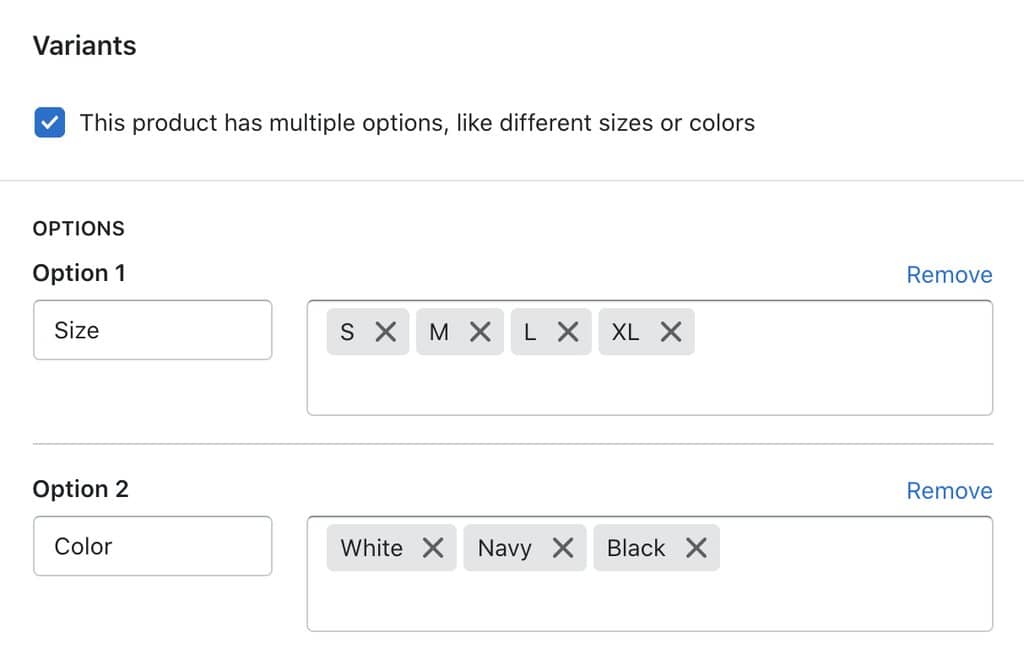eCommerce has been on the rise for the past few years, with its sales amounting to 21.3% of total purchases in the US in 2020. And since most of us can’t leave our houses these days either, it’s wise to start an online business. If you’re confident in your creativity, you should definitely look into how to sell art online, and this article will be just the thing for you.
Why should I sell my art online, you may ask.
Well, let’s ignore the fact that more and more art lovers are purchasing art online,(meaning you can generate more revenue from online sales) for a second. Selling art online means you can skip the gallery as the middleman, so all the money you make will go straight to your bank account. What’s more, it’s much easier to market your art online, especially if you’re targeting younger customers.
Now, it’s time to learn how to sell art online. First and foremost, you need to pick a place to sell. Do careful research to see which marketplace is best for your style and if it offers you fair competition. Here’s a list of the top 15 art marketplaces for online art sales.
Outline
I. Where to Sell Art online: Top 15 Art Marketplaces
01. Etsy
You can’t talk about selling your art online without mentioning Etsy. This online marketplace has become the go-to platform for artists of all kinds to sell their artwork.
But Etsy’s popularity is a double-edged sword. It is both an advantage and a challenge for artists. The upside? Etsy will provide you with one of the biggest audiences full of art enthusiasts and craft lovers on the Internet. But on the downside, you will be competing against one of the largest groups of artists. There are already over 2.5 million active sellers on this site by the end of 2019, and one can only expect this number to keep increasing.
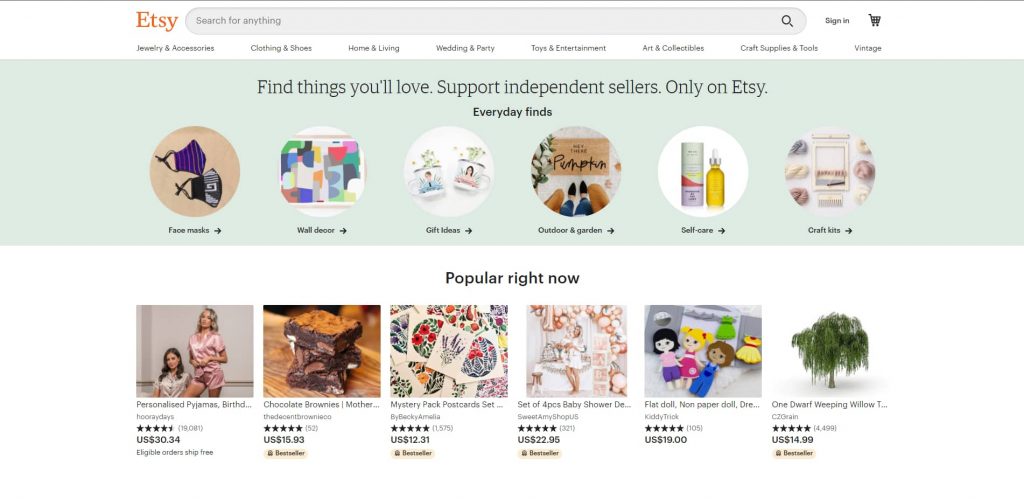
Etsy will provide you with a variety of tools to kickstart your art business, like a ready-made Etsy shop. This is especially handy if you’re still learning how to sell your art online. You can count on its massive userbase to have made the website as accessible as can be.
02. Amazon
This might come as a surprise, but you can expect to find just about anything legal on Amazon nowadays. The website offers a lot of opportunities for those selling art online, including Amazon Handmade, sections for prints and paintings, photographs, and even fine arts. So if you’re not an art creator, don’t worry because you can become an Amazon curator and sell different artworks.
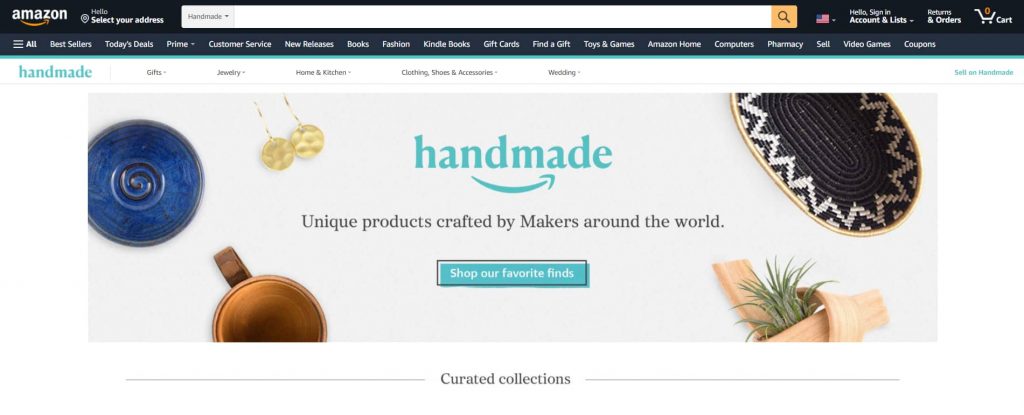
Depending on what you’re selling as well as how you want to sell it, Amazon charges different fees ranging from 5% to 20% per sale.
03. Fine Art America
Fine Art America is the world’s biggest online art gallery and print-on-demand technology business. Founded in 2006, Fine Art America has been assisting artists in selling their artworks like paintings, tapestries, home decor, etc. and is an online hub for thousands and thousands of photographers, graphic designers, artists and global brands.
Artists can upload their art work to the website, set the price and FAA will instantly market the product to a global audience. FAA will do all the work, fulfilling all orders in place of the artists, manufacturing the artwork at one of their 16 global production facilities and delivering them in perfect condition to customers.
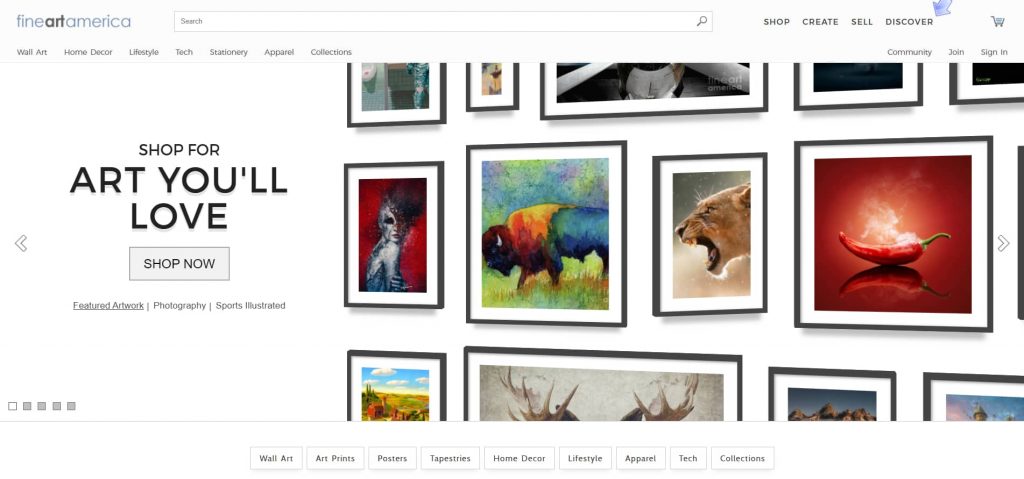
What’s more, Fine Art America provides artists with sales and marketing tools to help push their art, including branded online store fronts, selling art prints through Shopify, e-newsletters, and so on. All in all, Fine Art America is a fine place for starters that want to learn how to sell art online.
04. Artpal
Artpal is an online gallery that’s 100% free with over 184,000 artists worldwide. Artists on this site are given a lot of freedom in selling their art, for they can either sell their own items or use the website’s print-on-demand feature, enabling customers to have just as many options. How you want to sell your art online is entirely up to you.

Charging next to nothing fees and commissions, Artpal streamlines the art selling processes for artists, giving them more space to be creative; it’s simple, straightforward and secure. Also, it only takes you a few minutes to set up your free online gallery, and Artpal provides you with many tools to help you market your art.
In short, Artpal is a fine place to start selling and brush up your business skills. If you’re just starting out, do look into Artpal.
05. Society6
Want to learn how to sell your art online through firsthand experience? This website functions pretty similarly to Fine Art America, it allows artists to upload a variety of their work, and will take care of the order, packaging, and shipping for them. Society6 helps artists sell in many forms, from posters to iPhone cases. If you want to see your work making its way to home goods and merch, this is the place for you.
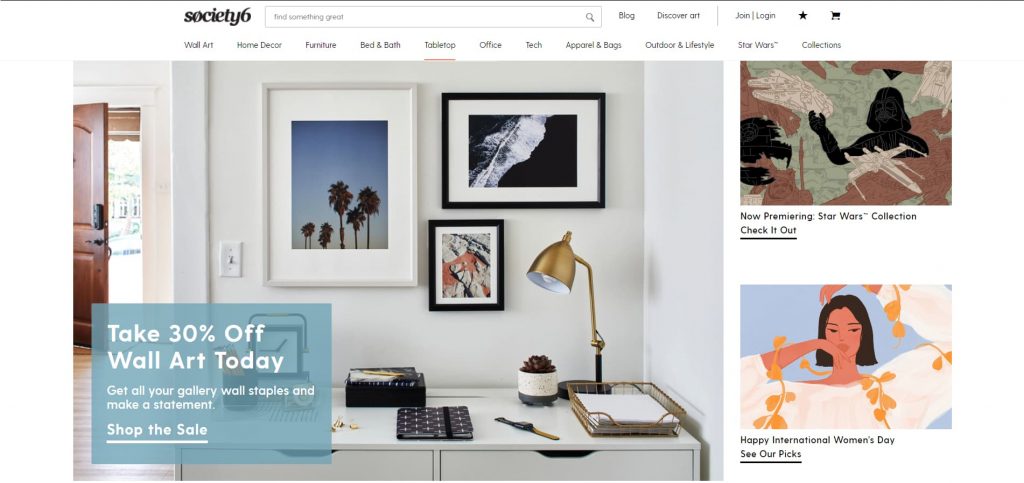
The best thing about Society6 is that they even allow you to set your own royalty agreement on art prints and canvases. That’s why Society6 is a very good place to start.
06. CASETiFY
And if you want your art to be exclusively on everyday items, check out CASETiFY. This business allows you to print your work onto tech accessories like iPhone cases or smartwatch bands, or even masks (which you should definitely wear if you’re going outside).
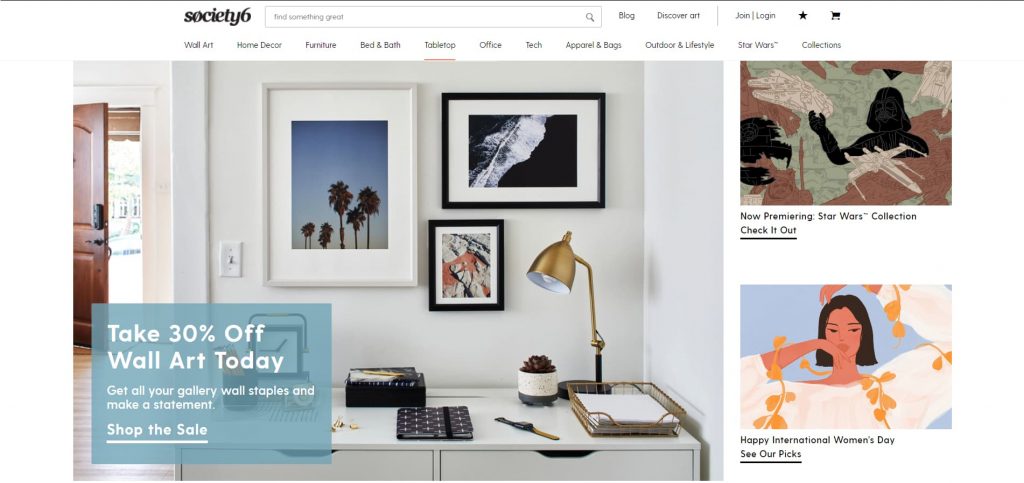
Artists simply need to upload their work, and CASETiFY will take care of the rest. Artists will retain the rights to their work and earn a commission every time a product is sold.
07. Storenvy
Storenvy is an online art marketplace like Etsy where artists and brands can launch a store in just a few minutes. Storenvy presents its users with a lot of choices of what they can sell, ranging from fine art, jewelry to even music. And there are actually 2 ways to sell your art: listing products in the marketplace or setting up your own professional storefront (like a Shopify store). Lastly, Storenvy offers monthly subscriptions that give you access to eCommerce tools to help market your products better like automated discounts.

08. eBay
Like Amazon, eBay has a separate section for art selling. Since eBay has been around ever since 1995, it’s trusted by many and is sure to offer the best support to its customers, so remember, eBay got you covered. They even offer How to Sell your art guides for those who just started learning how to sell art online, giving artists tips on what they can do to give their work a better chance to sell.
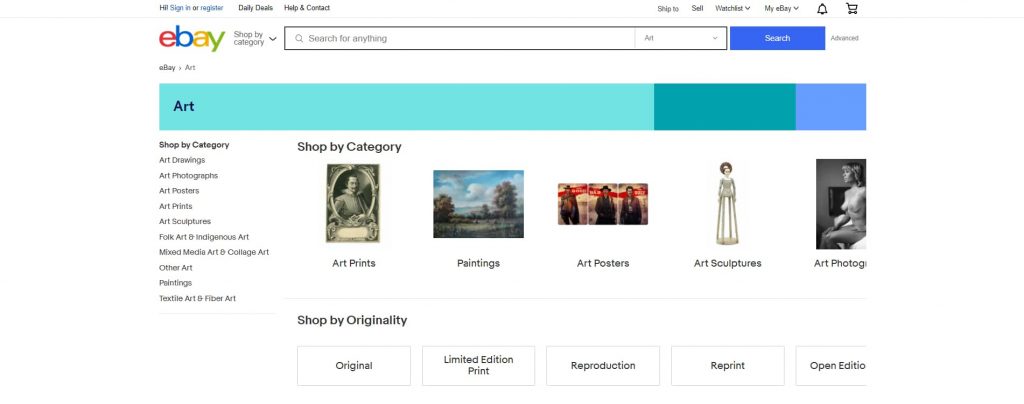
09. Saatchi Art
Saatchi Art is one of the most respected names in the business, even after it was sold in 2014. Artists can set up a free shop for their original work with prices ranging from $500 to over $10,000! The way this website operates is a bit different from the aforementioned ones. Dealing with mostly fine arts, they will send a courier to pick up the artwork from the artist (who has to package it) and ship it to the customers.
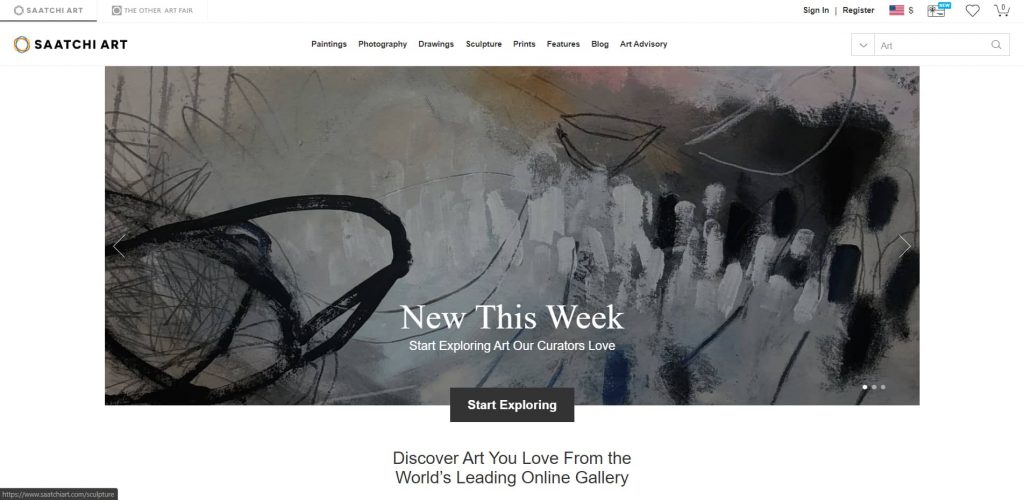
Saatchi Art takes a 35% commission from every sale made, but the fee is justified by the exposure it offers, which includes more than 1 million social media followers and over 1 million households who subscribe to its printed catalog.
10. Redbubble
Redbubble is another print-on-demand business that allows artists’ work to be printed on a variety of products from clothes to phone cases. It even allows you to set your own commission rate, enabling you to organize your earnings. If your expertise printing, Redbubble is a fantastic option to sell art online.
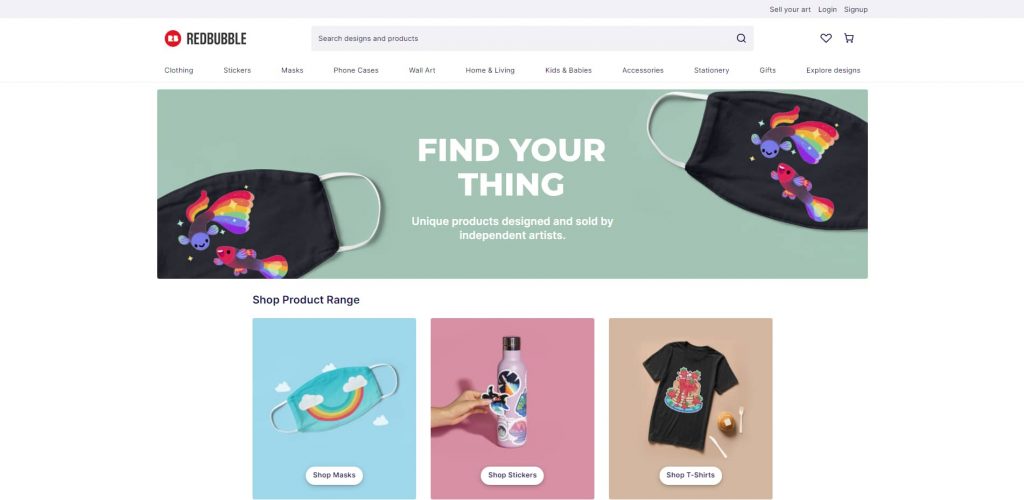
11. Getty Images
Getty Images has been around ever since 1995, and it was one of the pioneers of stock photo websites. This site, or any other stock sites like Shutterstock or iStock is a great gateway for photographers and videographers to make money from their work.

Getty Images divides their contributor opportunities into 3 separate categories: Creative/advertising; News, sports and entertainment; and Historical/archival. They don’t just accept anyone, so if you get rejected, don’t give up yet, improve your craft and try again.
II. How to Sell Art with An Online Store: Top 5 eCommerce Platforms
Selling art online with your own custom store gives you a lot more freedom as you can customize your storefront, as well as the price. There’s no middleman to charge you a fee per sale, so you can have all the revenue to yourself. That said, selling in online stores means there’s no given audience, and you will have to build one yourself. Most eCommerce platforms will provide you with excellent marketing tools to help you reach more customers, but it will prove to be quite a challenge to novices.
So if you’re still in the first phases of learning how to sell art online, be prepared to face major setbacks and competitions.
01. Shopify
Shopify is one of the best choices for selling, especially if you plan to dropship or rely on social media marketing. Shopify is trusted by many, many dropshipping and print-on-demand businesses, so if that’s the direction you’re going to, you’re all set.
The best thing about Shopify is that the UI (user interface) is really intuitive and friendly, which also includes many buyer-centric templates for your store. Most beginners to website design can get the hang of it in just a few minutes, and they have very thorough guides for starters learning how to sell art online. What’s more, they also offer a myriad of add-ons and plug-ins to aid your business, including Shopify POS (point of sale) for traditional brick-and-mortar stores.

Shopify also allows multiple-channel and social selling, so having an established fan base on social media will give you a huge headstart. In addition, Shopify is a big name so you don’t have to worry about the shortage of certified partners.
02. BigCommerce
BigCommerce is a well-rounded eCommerce platform, with an advanced product search engine that’s super useful to bigger retail brands. BigCommerce’s themes are also advanced and buyer-centric, although most of them are not free. That said, there’s a community of designers and developers to always help you when in need.

If you’re relying on SEO to market your product, BigCommerce is for you, for it is known for its exceptional SEO performance. And just like a good eCommerce platform, it excels in multi-channel selling.
One downside is that it can get pretty expensive when you want to increase your art selling volumes.
03. Wix eCommerce
Wix eCommerce has come a long way in recent years. It is perfect for small eCommerce businesses, offering multichannel integration, dropship, and print-on-demand capabilities. Also, its SEO performance has improved drastically compared to its debut.
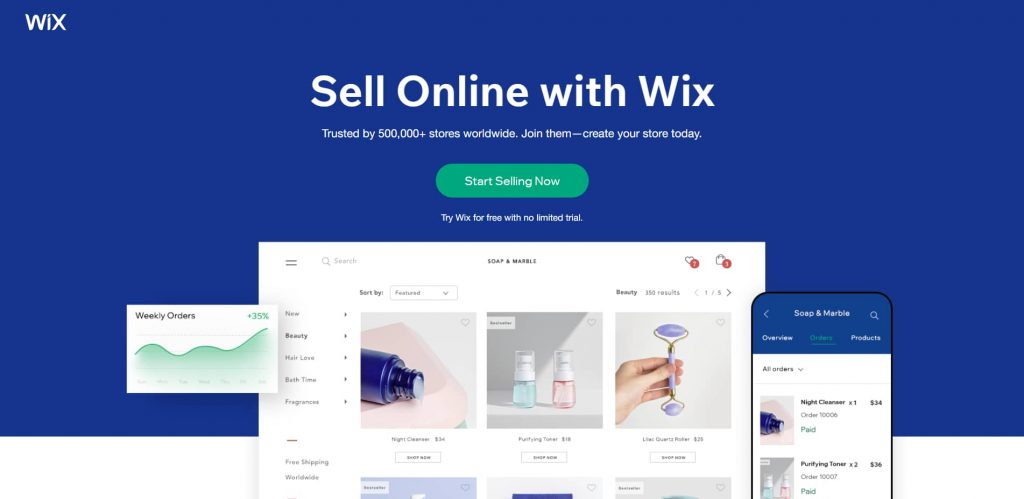
Since you’re selling art, it’s a good idea to have a beautiful storefront, and Wix got you covered. It offers hundreds of customizable themes and even gives you the option to design your own website from scratch (which, of course, will take some time to get used to). And lastly, it’s beginner-friendly, so if you’re just starting out, don’t worry because Wix’s customer support is top tier, so don’t hesitate to give it a go.
04. Squarespace
I’m sure you’ve heard this name come out of many Youtubers’ mouths talking about the videos’ sponsor. Thus, Squarespace is a well-known website builder, although eCommerce functionality can only be accessed with a higher-tier subscription plan.
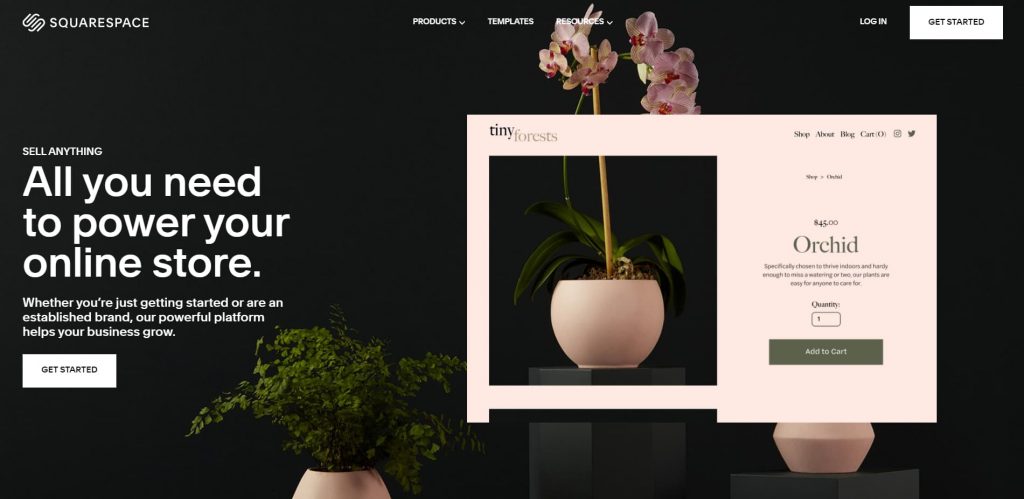
As its primary function is a website builder, Squarespace offers fantastic templates that are easy to use, creative, and of course, customer-centric. Learning how to sell art online will be so much fun when you can experiment with artsy themes that Squarespace provides.
When your business gets bigger, you will surely have more complex eCommerce needs, and Squarespace also provides up to 4 business plans, where the higher ones will charge you no transaction fees at all.
05. Volusion
If you’re a more data-savvy artist, you might want to look into Volusion. It is a drag-and-drop website builder with many free themes for your shop. And with over 200,000 users, it’s certainly one of the top eCommerce platforms for selling art online.
Volusion’s biggest strength lies in its remarkable data reporting tools and analytics, making it so much easier for you to analyze your customers’ behavior. If you plan on selling your art online across platforms, you will find these benefits super useful.

III. How to Sell Art online: 05 Art Stores for Inspiration
Before you start your business, it’s essential to have a look at other similar ventures. This way, you not only have a general sense of what an online art store should look like, but also the way they conduct business, i.e. how they market their products, how they sell, etc. An online field trip like this is probably the best way to learn how to sell art online. So now we’ll introduce 5 online art stores to show you the ropes.
01. Spoke Art

Essentially an exhibition space located in Berkeley, CA, Spoke Art has branched out to the Internet. Their specialization is new, contemporary painting, sculpture, and illustration. That said, they mainly focus on pushing art prints, which include many forms from fine art prints to film posters, as well as original works.
What stands out on their website is the navigation, which is highly intuitive and user-friendly. The buying process is also straightforward and hassle free. When you click on an individual product, you can see all the information about it, e.g. the artist’s name, the product’s title, material, dimensions, as well as a short backstory if available.

In addition, you can share your favorite work to many social media platforms. This is a smart move from them to gain more organic exposure.
02. Kelly Rae Roberts
This shop is run by an independent artist, Kelly Rae Roberts. The most striking feature about this website is that her presence is really strong, for the site is not only focused on selling art, but is also incorporated with Kelly’s blog. The site’s design bears a strong resemblance to Kelly’s drawing style – colorful and lively, with soft edges and gradient colors.

The voice of the website is intimate for it is Kelly’s speaking herself. There’s no formality like what you see on Spoke Art’s site, and this gives Kelly’s shop a more close and friendly vibe. What’s more, she even promotes her art classes here! If there’s someone who you can learn to make and sell art online from, it’s her.

The product page is done exceptionally well, with detailed description that answers all of the buyers’ questions, like the material of the printed paper, how the print will be packaged, frames and mats, etc. The only minor drawback is there’s no “Buy now” option so it will take an additional click to check out your cart.
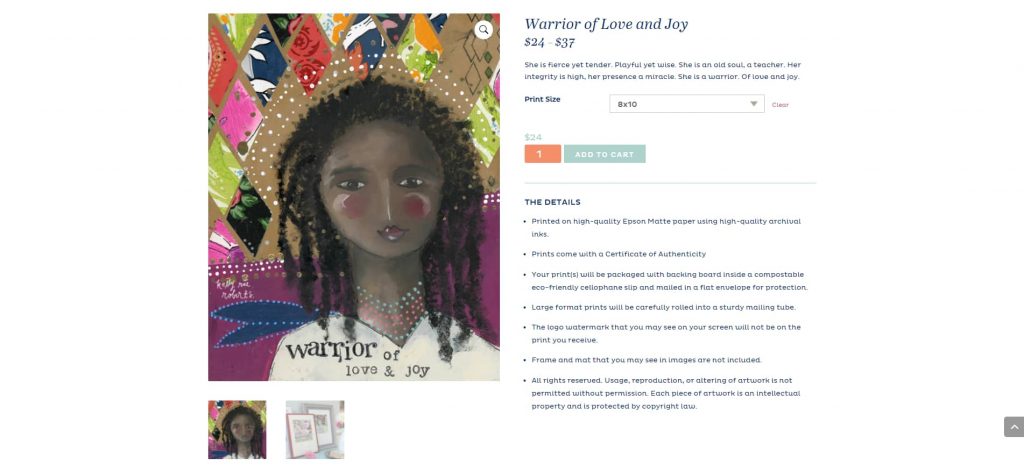
03. Jane Lurssen
Jane Lurssen’s website is as to the point as can be. The design is minimalistic with no unnecessary sections. The homepage has everything a buyer’s looking for – the artwork, and whether it’s still available. However, this minimal design is flawed, too. You can’t see the price without clicking on the picture, and even then, you won’t know if the painting will be framed and ready to hang or not, or how it’s going to be packaged.

That said, Jane Lurssen’s site is still worth looking into, judging by the design alone. If you want to start a hassle-free shop, this is the way to go.
04. AllPosters
AllPoster is a professional store that sells art prints and wall decor. Their design isn’t that eye-catching for their font is a bit too generic, but the product placement is definitely on point, resembling a teenager’s room.
Regarding their huge range of products they sell, they have a very effective way of categorizing posters for easier browsing, either by topic, sellers or artists, and so on.

Product purchasing is top tier. After clicking on an artwork, the website will take you to the information section, which has all that you need – information on the product, the artist, and even shipping and returns policy. You can also choose which frame you want on your poster. To make your decision easier, AllPosters even includes mock-ups of the posters hanging on the wall.

In addition, you can even find related categories in a product’s page to browse for more if you’re not satisfied with one.
05. Raven Roxanne
Raven Roxanne is an independent artist that sells original fine art work and art prints. For this reason, her site also has her own voice and she does blog on it. Raven’s site has a somewhat minimalistic design, with just enough color to be interesting but not overwhelmed.

The product listing page has an intriguing function – the price and size of an art piece will appear when you hover above it. And when you click on a piece, you will be taken to the information section on that specific product like usual. Here you can find out how the piece will be packaged and when it will be delivered, as well as the materials of the canvas and frame. Also, you can find recommendations of other works.

All her artwork is shipped ready to hang.
IV. How to sell art online with Shopify: A Step-by-Step Tutorial
This part is for those who want to sell their art independently, rather than with an art gallery. As mentioned above, eCommerce is one of the fastest growing industries, so it’s a safe bet to start your own online art store with an eCommerce platform.
And we’ll be going with Shopify, for it has proven to be the most effective overall. Do keep in mind that this tutorial can only cover the general idea, you will have to do more research and customize your methods to make the most of your art selling business.
Step 1: Product curation
Think about which creative works you’d like to sell online. Are you an original creator? Or are you more of a trader who can get your hands on some fine art work? Do you plan on selling your art in digital form or as shipped packages? These are the basic questions you have to answer first and foremost.
Here are some suggestions for different types of art selling business you can run:
Print-on-demand
- Fine art: This can be your original paintings/designs, or other artists’ design that you bought the right to and sell as your own prints.
- Apparel: Do you want your designs to be on everyday clothing? Keep in mind that this is a fantastic way to gain organic audience.
- Everyday items: Putting your art on to iPhone cases, pins, stamps, postcards, you name it. Small items like this are loved by everyone and are often bought as gifts, so orders are going to keep coming in.
Digital downloads
If you’re a photographer, designer, or a videographer, you might want to consider selling stock photos and videos. This is a good business idea if you don’t want to get into the hassle of packaging and shipping your products. And get ready for requests from other businesses to print your art!
Miscellaneous products
It’s a bit trickier if you specialize in selling unique things. Making woodwork or neon signs can technically be considered print-on-demand, but due to the products’ special characteristics, it should be dealt with with extra steps.
Have a look at an example, Neon Poodle, a neon lights business that lets their customers customize their own products.

Step 2: Open your own online art store with Shopify
Here are 5 simple steps to set up a Shopify store for selling art online.
01. Pick a theme for your art store
Since you’re selling art online, your store’s presentation is really important. Picking an eye-candy for a theme is essential, so do look out for what fits your style best. Here are some recommendations from Shopify.
Colo (Free)
As an off-site option, this Shopify theme is a hidden gem. With a plethora of feature options and customization tools, there’s no need to use extra plugins on your site, making it a great option for any art store.
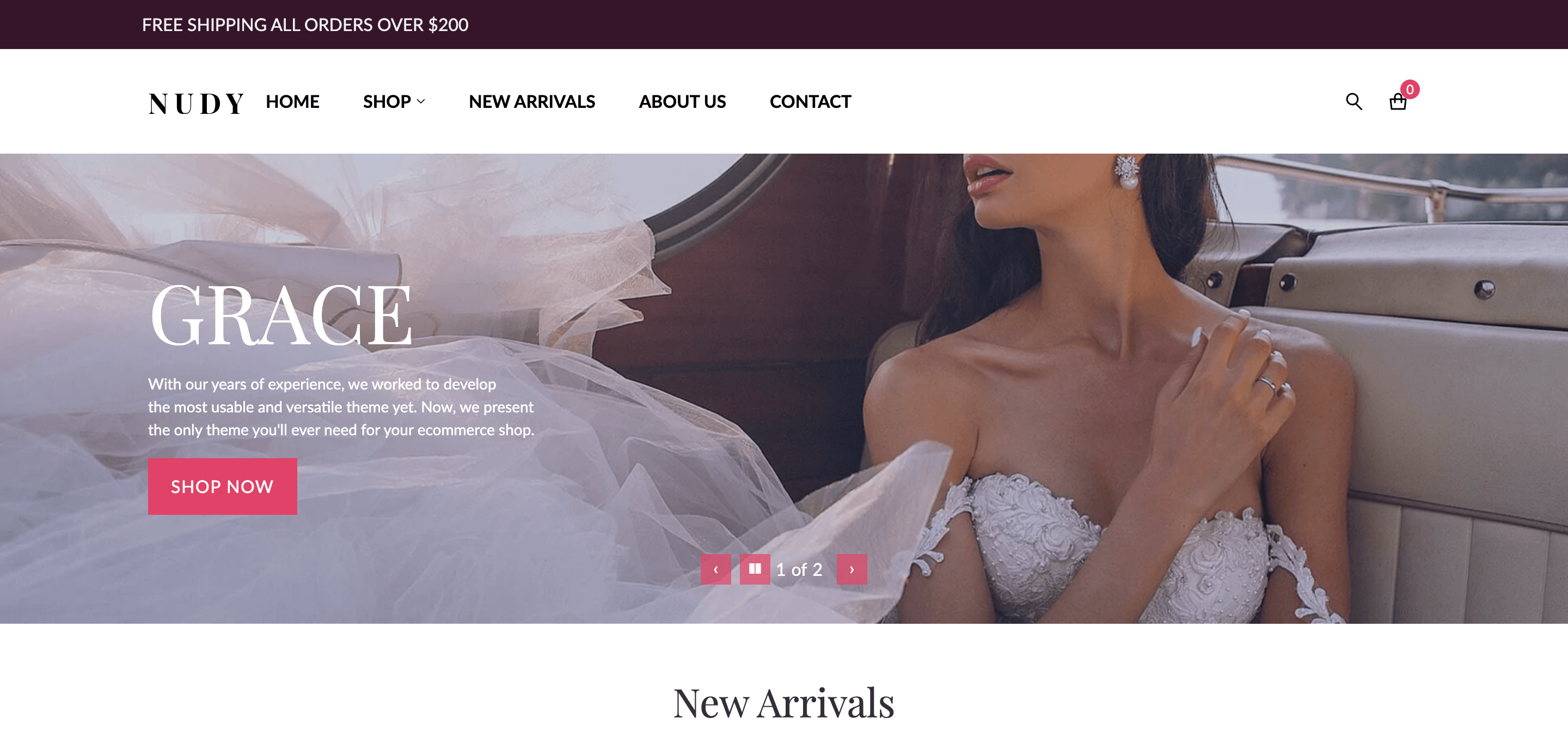
California ($180)
California is especially suitable for stores selling art prints thanks to its amazing collection listing.
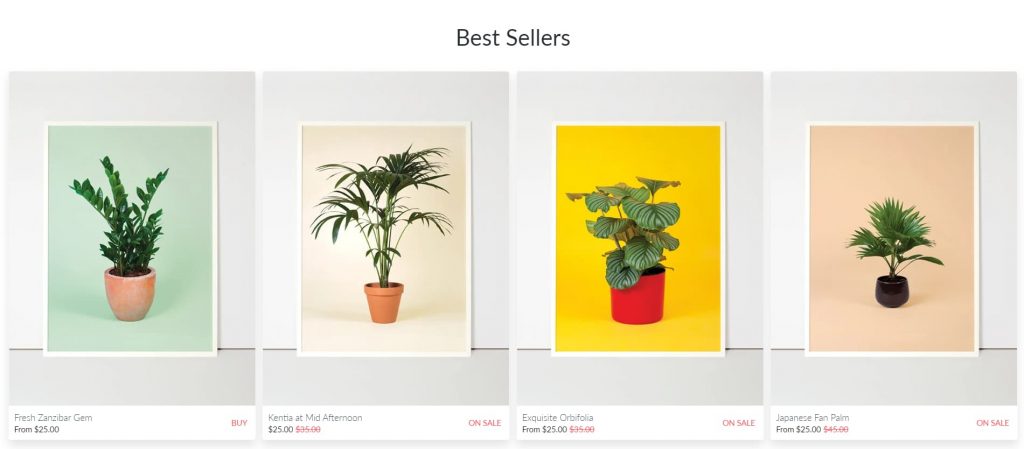
And here we have an art store using this template, Philosophie.

Symmetry ($180)
As you can see in Shopify’s descriptions, this theme is great for stores with a large number of products. So if you don’t like to limit yourself to 1 line of artwork only, this template is for you.

Icon ($180)
Icon is perfect for visually striking art brands with image-focused content. If you like something strong and edgy, this template might just be perfect.
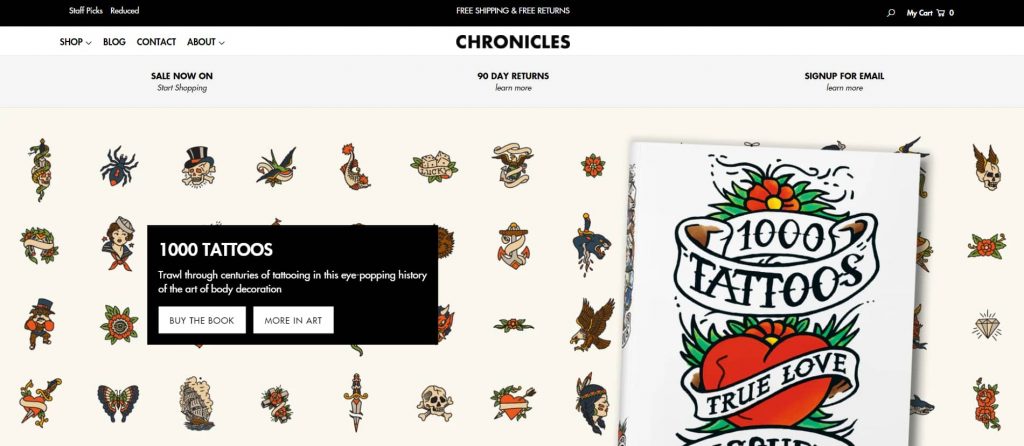
02. Add your products and collections
Art stores will entail many collections and items, so this is a primary concern. If you’re running a print-on-demand shop, do keep in mind to set up different images of the products including mockups, as well as product variants like sizes and frame colors.
03. Build a beautiful homepage
The homepage is the first thing your customers will see, and it’s all about presentation. That’s why you need to display your best featured products and collections, with magnificent product pictures. You need a hook to reel people in.
In addition, a custom, unique logo will do your business wonders. Take time to design your own logo and add it on your homepage in the Shopify editor board.
Here’s an example of an art shop with a unique logo and striking images, Drake Cereal.

04. Set up gift cards and discount codes
When you first debut your store, it’s wise to promote discounts, for it will surely attract more customers. Everybody loves free gifts and discounts. And if you’re targeting younger customers, this move is indispensable. Thanks to Shopify, you can set this up easily in the admin dashboard.

How? Go to Discounts > Create discount > Discount code > Customize your discount code.
05. POP UP!
A pop-up is a great marketing tool to add CTAs (Call to Action), announce your promotion events, or have your visitors sign up. This will help you gather more leads to convert into customers. This might sound like a big jumbo of business terms, but if you want to learn how to sell art online, you gotta get used to them.
The most common move from businesses is to ask for visitors’ emails in exchange for discount codes of items.

Step 3: Market your artworks
Selling art as an individual artist isn’t easy in the marketing department, since you’re on your own. But don’t worry, there are some useful tips you can use to improve your art marketing game.
Social media
Social media is free, and can help you reach thousands and even millions of art enthusiasts. Promote your art on the big platforms, and don’t hesitate to interact with comments on your posts.
Keep in mind that you shouldn’t post too much, though. You don’t want your followers to feel like you’re spamming people, or they will unfollow you. Be sociable and show your personality as well.
Start blogging
This is a great way to tell your story as well as maintain your online presence. With Shopify, you can incorporate your blog right on to your main website, along with your art selling.
Although it’s a social media platform, Pinterest deserves its own place in tips to market your artworks, for it is also a great search engine. There are over 416 million active users as of October 2020, and the number will keep increasing. Not only is it a great way to showcase your artwork to a huge audience, Pinterest is also a superb resource to learn more about art advertising.
SEO
Use keywords in your posts and product listing so Google and other search engines can find you. If your website is well optimized, your chances of buyers knowing about you will increase significantly.
Never stop learning
To properly sell art online, you need to constantly digest new knowledge on how to best market your work. Listen to podcasts, enroll in online courses, whatever you can access to brush up your understanding of online marketing.
Step 4: Packaging and shipping
If you’re selling digital art, you can skip this step. But if you’re planning on running a print-on-demand business, packaging and shipping will be a major concern.
First of all, depending on your specific product, you will either have to do all this manually on your own, or you can partner with other brands who you can send your designs to and they will take care of everything.
Secondly, keep your customers informed. On your product page, tell people how the artwork will be packaged. Is it framed and ready to hang? Will the buyer have to assemble the pieces themselves? How long does it take to ship the parchment?
Step 5: Art plagiarism and copyright protection
Copycats are a major issue to those selling art online. Some big chain stores can rip off your original artwork and market it like their own. Some artists have even had to hire lawyers and take the matter to court. It might be challenging for starting artists waging wars against the giants.
But thanks to social media and “cancel culture”, social pressure has moved slowly to aid the artists. Nowadays, it’s easier to raise your voice and be supported by countless art enthusiasts on the Internet.
And if you’re dropshipping art or distributing original artwork from other artists, please be careful to have their permission to use their designs. You don’t want to get into legal problems, it will be costly and bad for your brand image.
Conclusion
Now you should have the foundation to sell your artwork online, what it takes, what opportunities and challenges this endeavor entails, where to sell, and how to sell. Business is never easy, but if you’re determined, or inspired to raise your voice in the form of art, go for it. We hope this guide has been helpful to you, and you have our full support.
Check out other Brick-to-Click in-depth guides:
